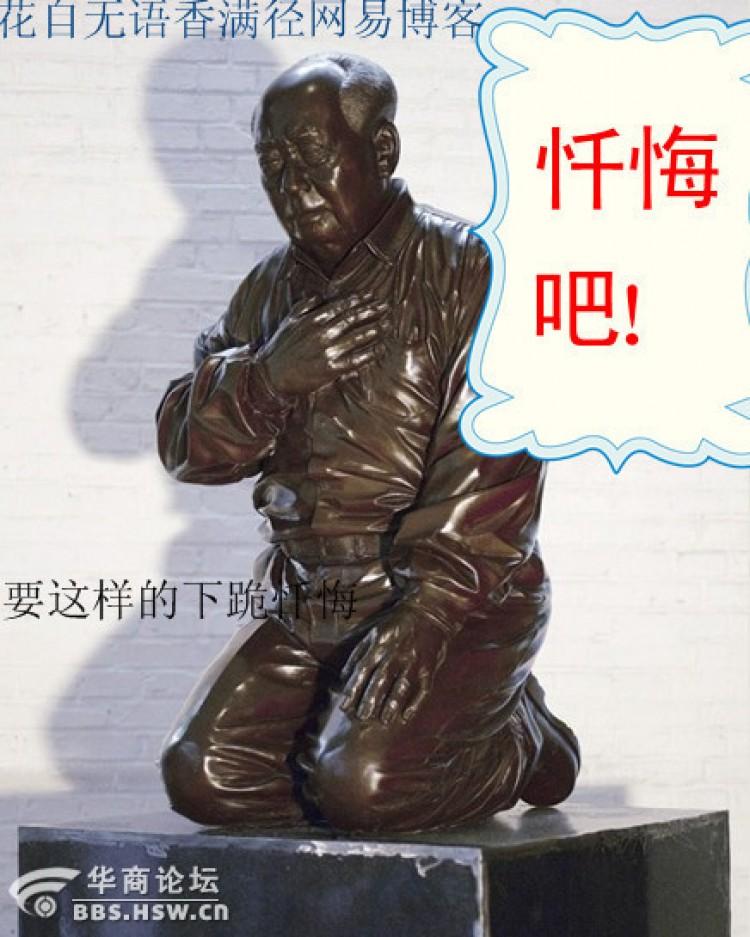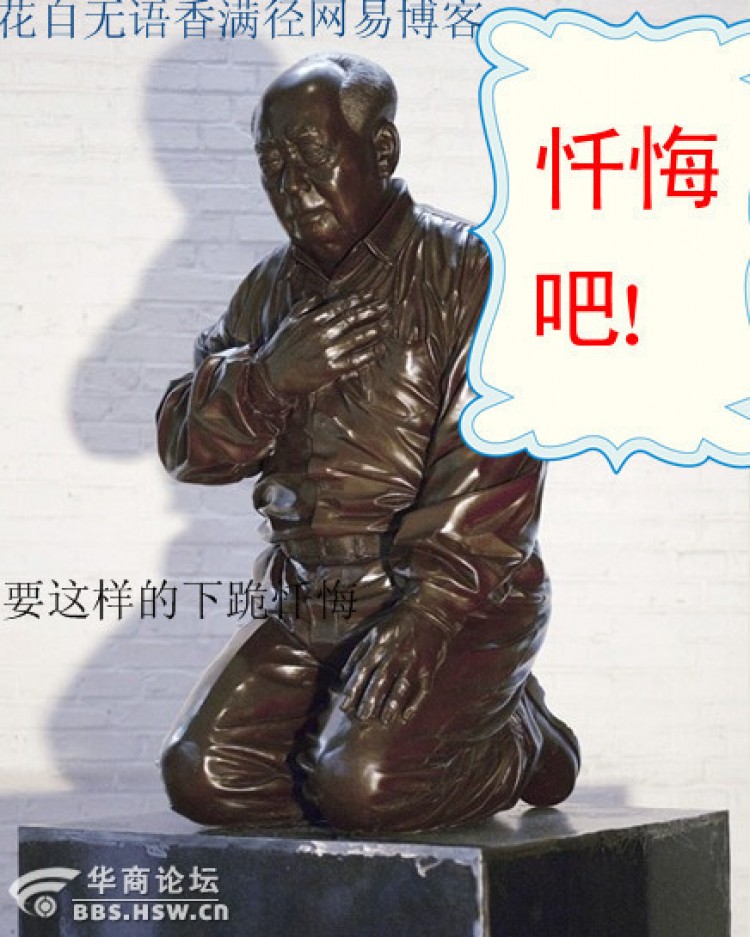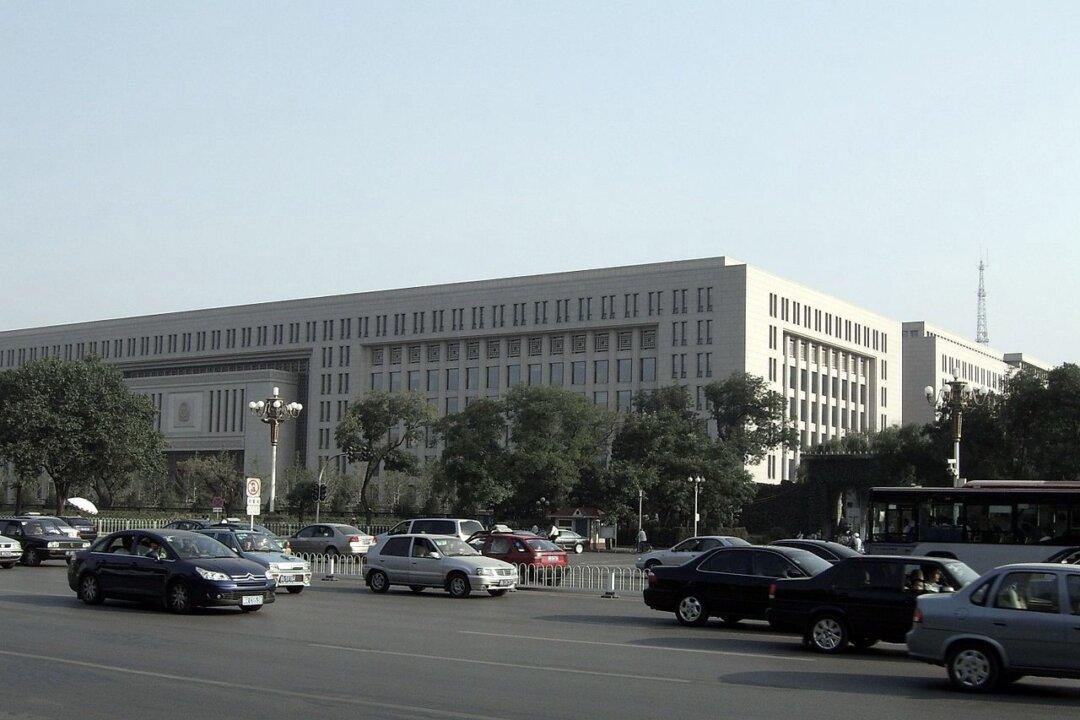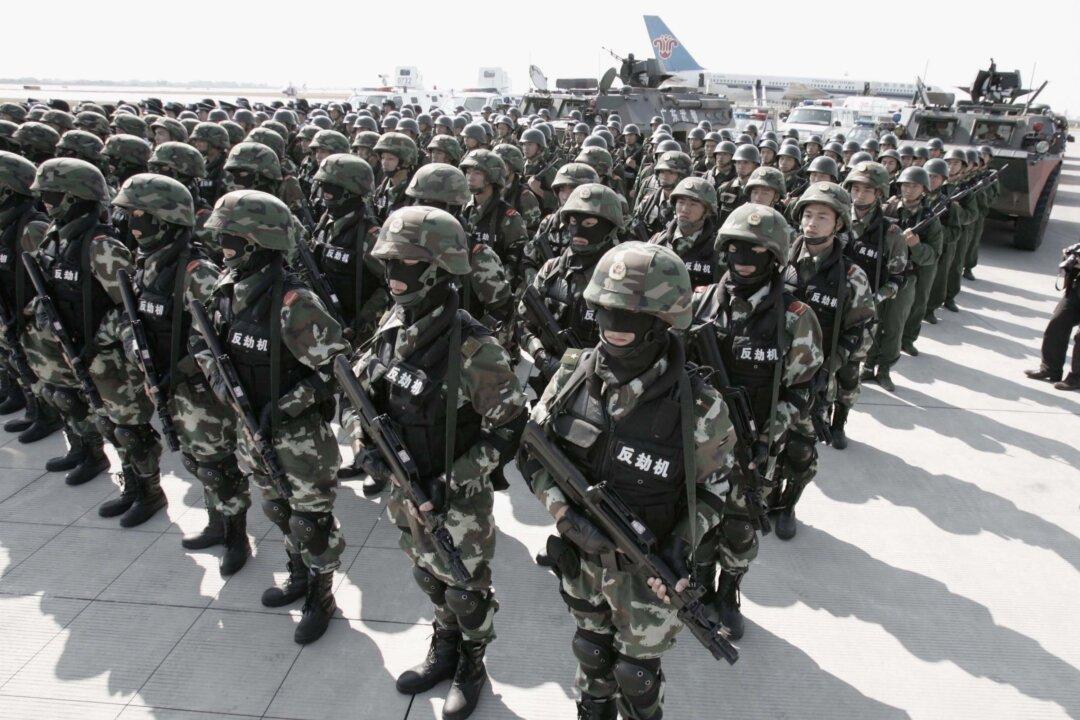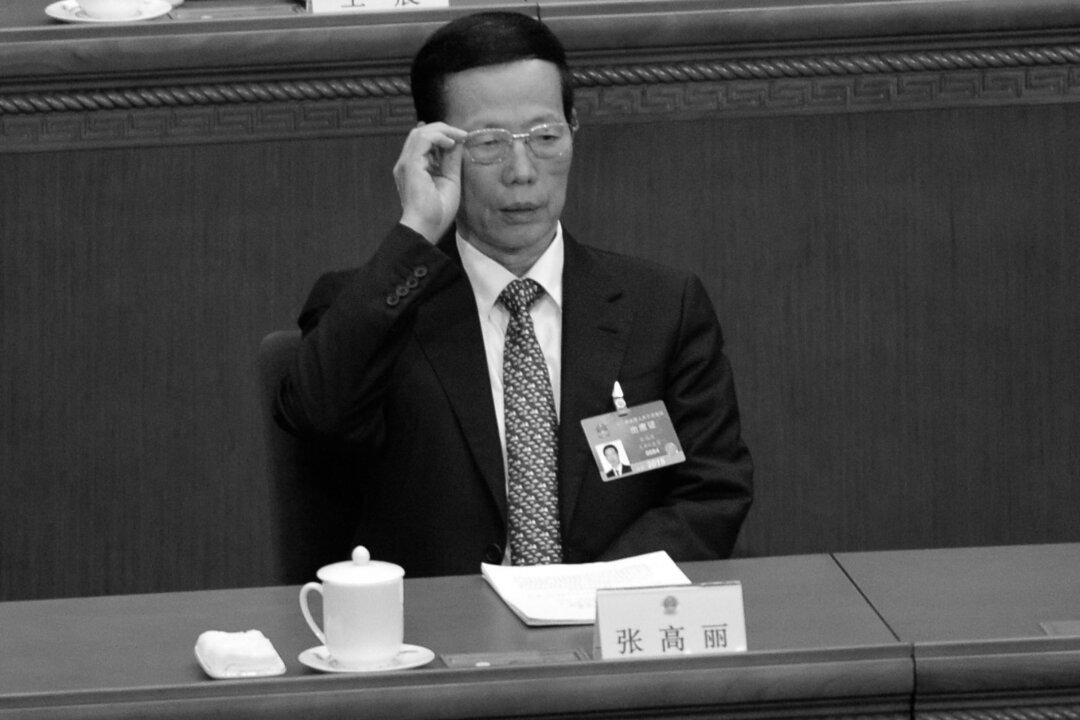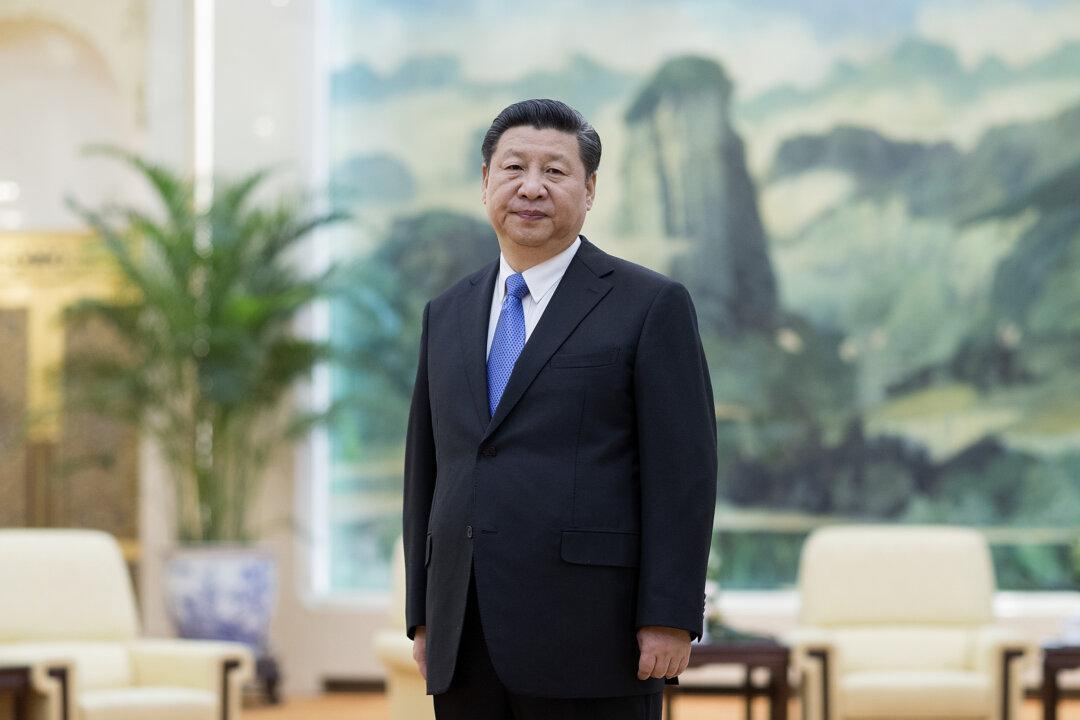A Kneeling Mao Feels Wrath of Online Chinese
Two bold Chinese artists are exhibiting works in the U.S. that could never be shown in China—and Chinese netizens, taken by the hard-hitting political commentary embedded in the pieces, are applauding furiously.
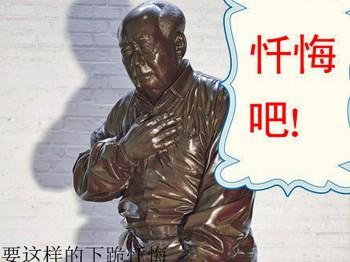
The bronze statue of Mao Zedong kneeling with his right hand on his chest and a sorry countenance. The Chinese words mean 'Repent!' bbs.hsw.cn
|Updated:
